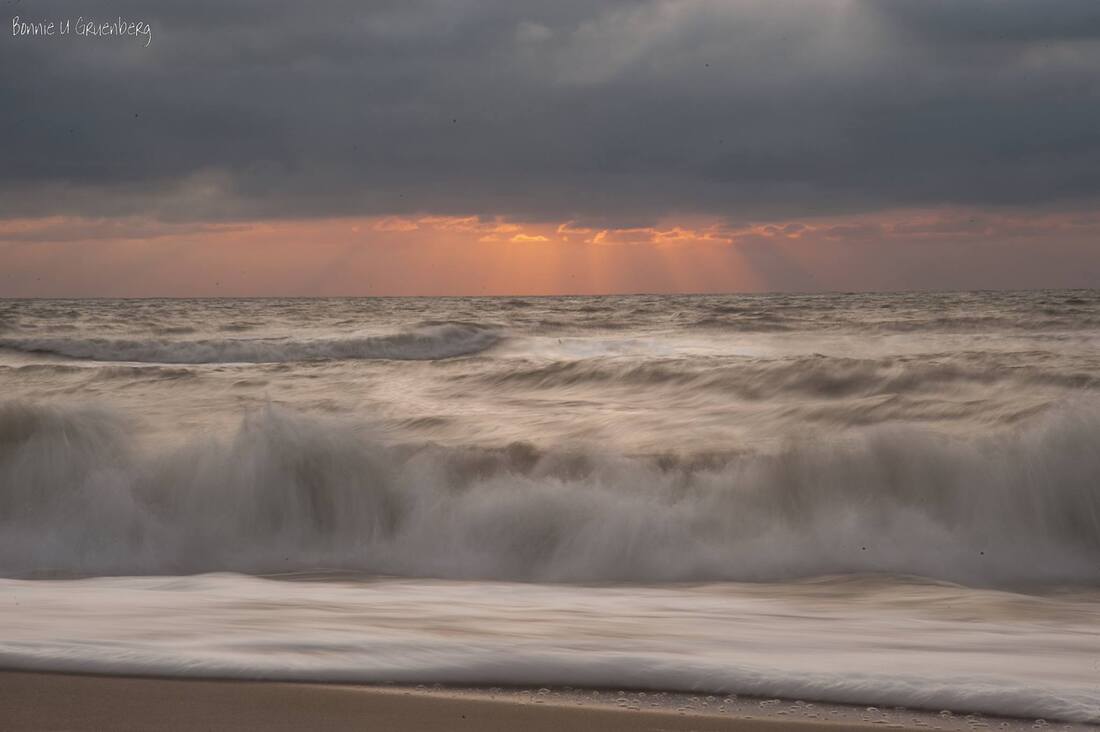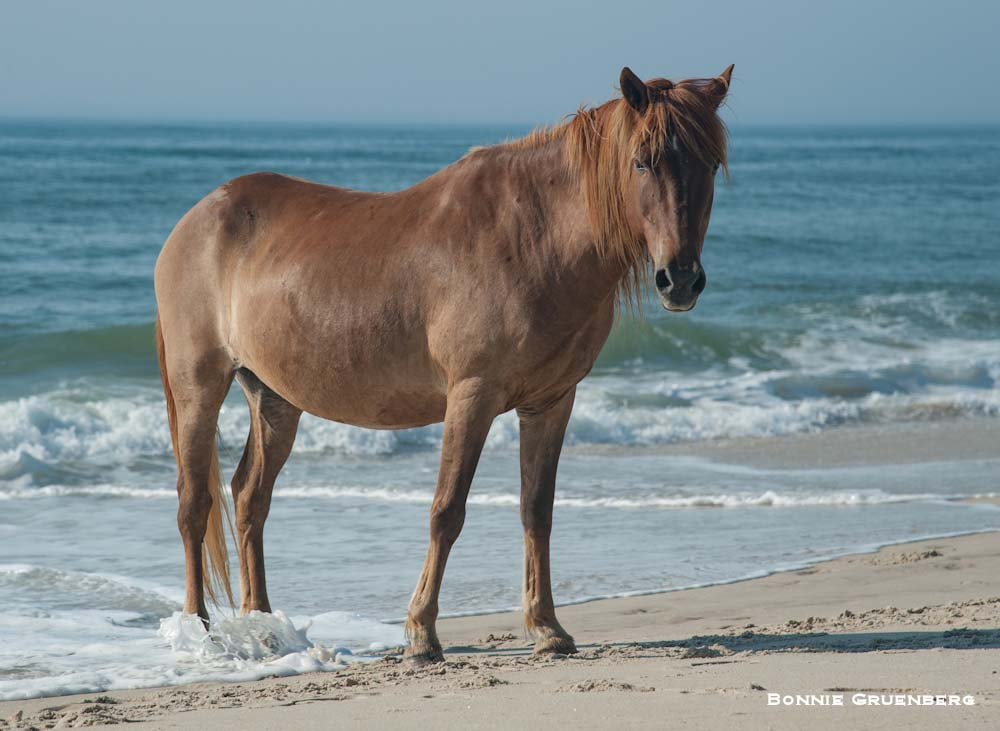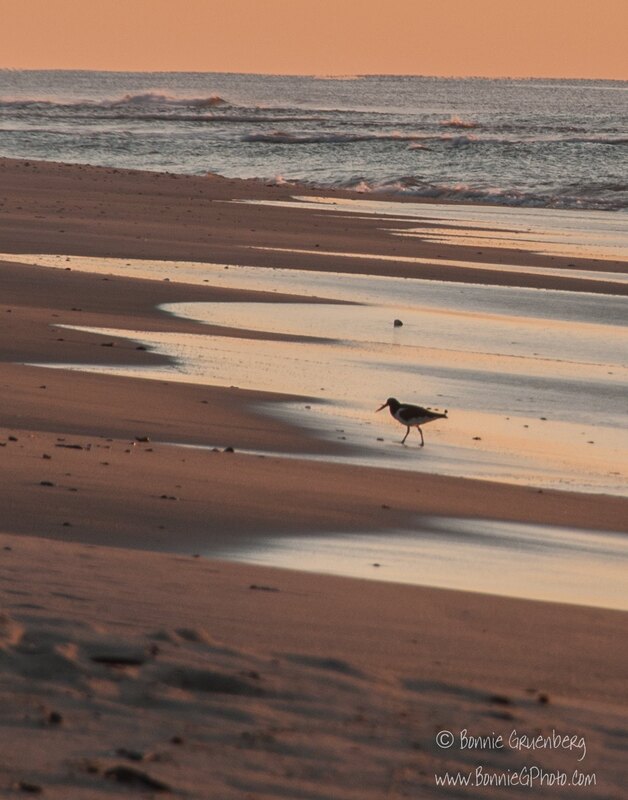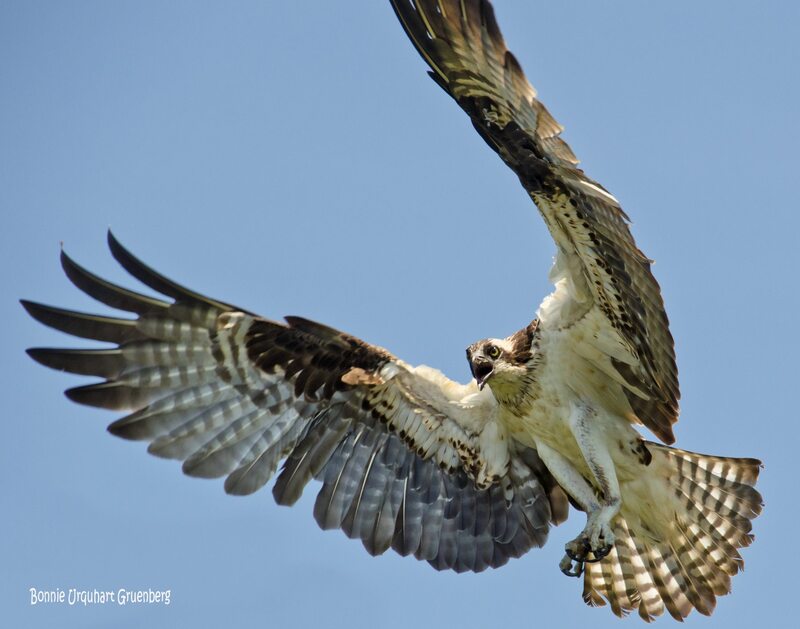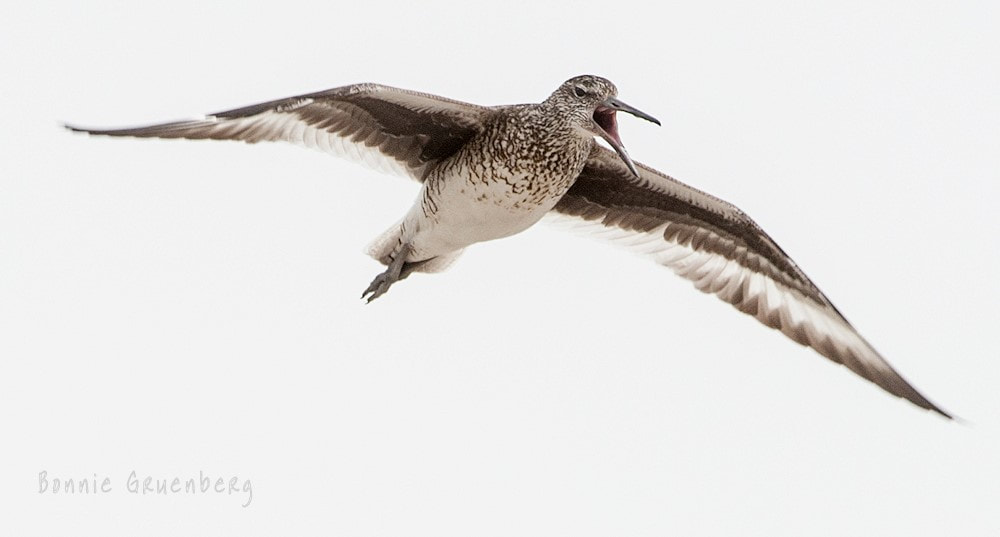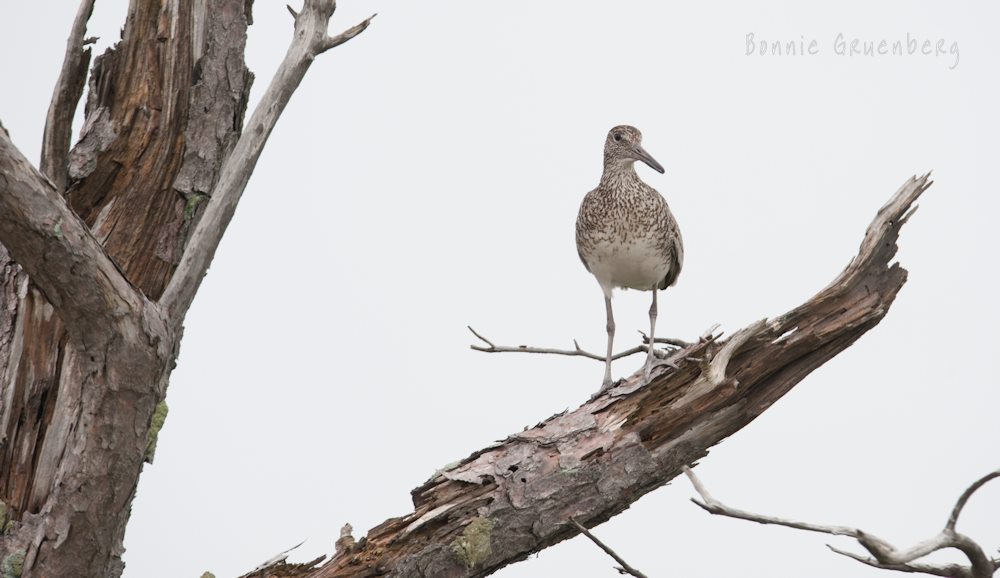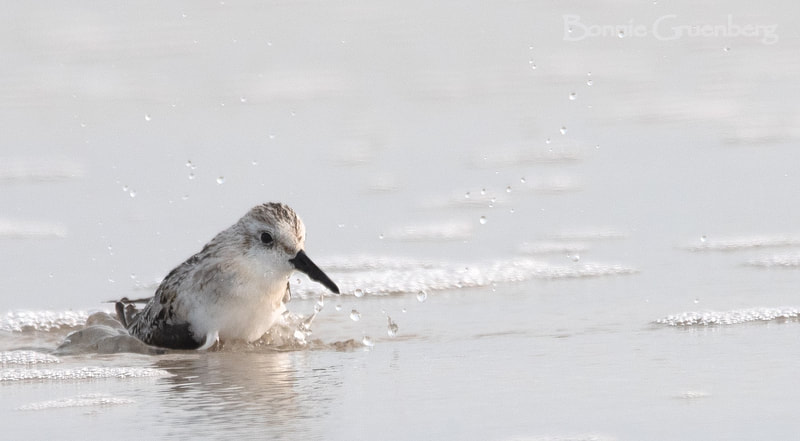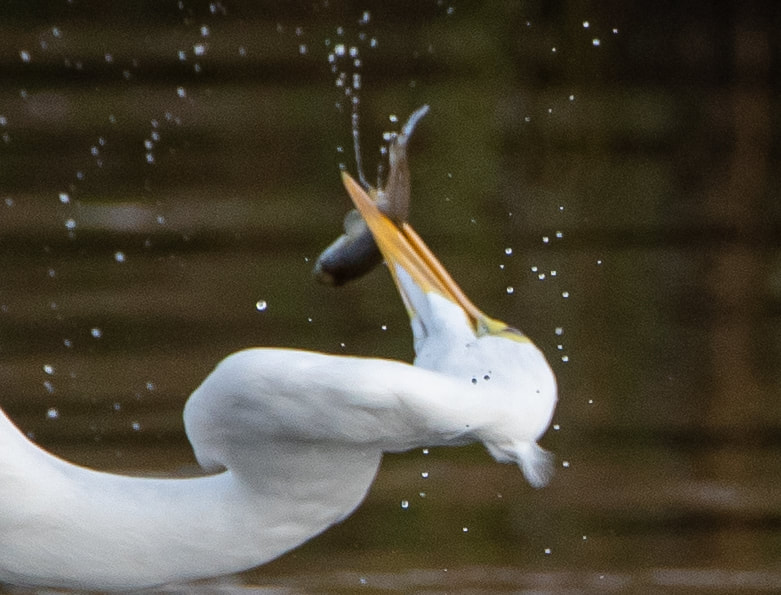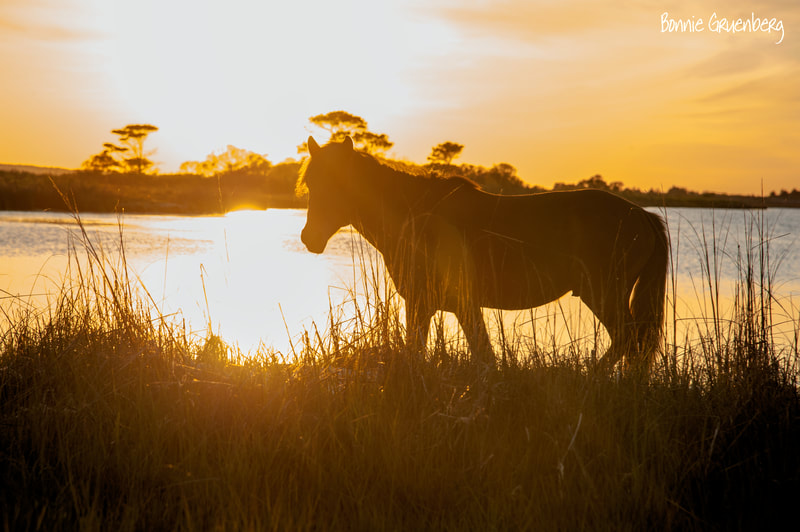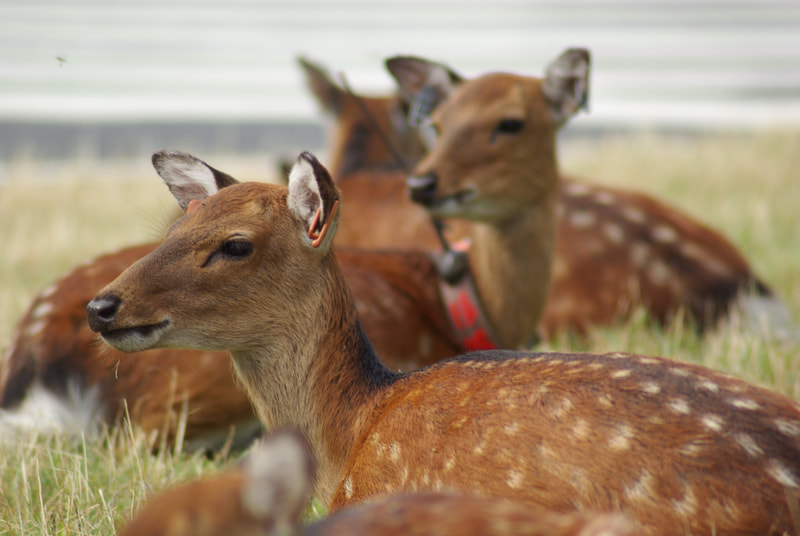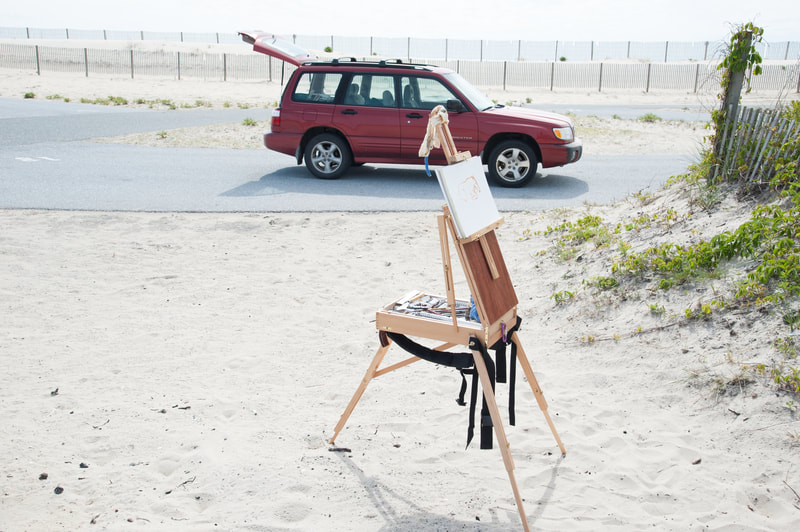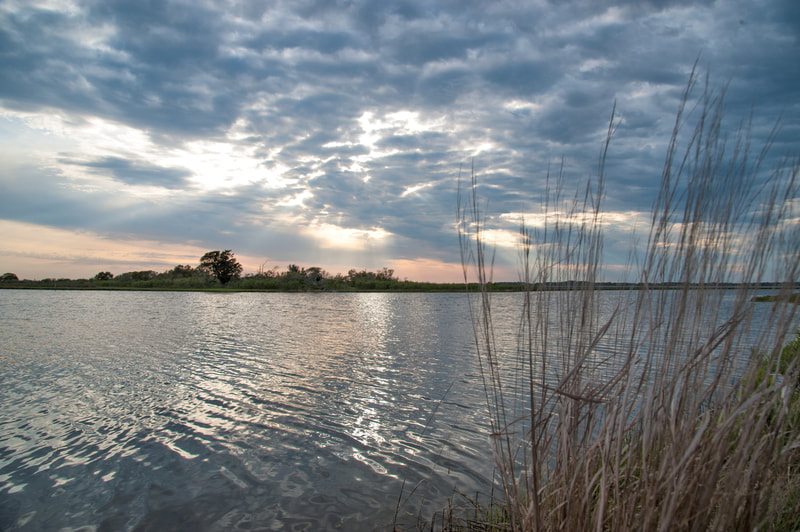Photographing Assateague Island National SeashoreThere are countless photographic opportunities on Assateague Island National Seashore. Wildlife is everywhere, making a living in the marshes, ocean waves, dunes, and maritime forest. Bird photography is productive at any time of year, as Assateague supports large populations of birds, both residents and seasonal migrants. Bayside Peninsula and Bayside Point are designated birding hot spots on Cornell's E-Bird site. Though often biting and blustery, Assateague offers excellent opportunities for cold weather hiking, and the park is relatively empty in the winter months.
Deer abound, both the native whitetail and the exotic Sika. Sika deer are a variety of miniature Japanese elk imported in the 1920s. They multiplied successfully—too successfully. Fairly resistant to disease and parasites, the hardy sikas outcompete the native whitetail deer and eat much of the same forage as the waterfowl. Hunters thin the herd by bagging a prescribed number annually. Bike trails zigzag around the camping areas. The National Park Service rents both bicycles and canoes, and rangers lead programs that teach everything from bird watching to shellfishing. Admission to the visitor center is free. It offers a touch tank, movies, information and books about topics of interest, and air conditioning if you have been out on the beach too long. Asateague Island State Park offers camping with hot water bath houses and a day use area with a small restaurant and shop. In summer, lifeguarded beaches welcome swimmers and sunbathers . The summer surf is generally gentle and the sun dazzlingly warm. The waves can get quite vigorous after a storm, and are good for surfing and body boarding. Anglers pull an array of sport fish from the nutrient-rich currents east of Assateague. The fisherman with basic knowledge of seasons, conditions, equipment, and regulations can fish year-round, taking croaker, corbina, perch, sharks, stingrays, and even flounder. Park Service rangers offer surf-fishing demonstrations during the summer months. Sinepuxent Bay and Chincoteague Bay are ideal for canoes and kayaks. Most paddlers put in at the launch on Ferry Landing Road, and certain public landings outside the park also serve as put-ins. The NPS rents canoes (and bicycles) at this location as well, and it offers four Assateague campsites on the bayshore specifically to paddlers. The word seashore typically conjures images of fun and sun, but enjoyment need not be limited to warm days and sunshine. A number of photographers have taken spellbinding mages of the Milky Way from Assateague beach. At night, the beach is animated with scurrying ghost crabs and mole crabs tumbling in the waves. The vastness of the beach is absorbed by the black of night, but the hotels, Ferris wheels, and city streets of Ocean City shine like a beacon to the north. In late fall, winter, and early spring, the shore offers cold, wind, and sometimes snow and ice, migratory waterfowl, no bugs, and few visitors. In winter, there is the opportunity for a different perspective. The natural forces of wind, water, and shifting sand assert themselves more energetically, making one feel small and insignificant by comparison. Great beauty is everywhere in all seasons. The solitude provides opportunities for introspection, the ever-changing sameness of the sea is reassuring, and the wildness of the natural beach—and the horses—helps the receptive visitor reconnect with a world larger than an office and more majestic than the daily commute. Assateague is conveniently situated within a half-day’s drive of one fifth of the United States population. Consequently, it is very heavily visited. TripAdvisor® message board comments vote Assateague the best beach within a day’s drive of Washington, DC, Philadelphia, and New York City. The clean, easily accessible beach at the Maryland end of Assateague is much less crowded than the beach at the Toms Cove area of the Virginia portion. Despite the high use, many areas remain remote and isolated, because 90 percent of visitors to the Maryland portion do not venture beyond the developed areas of the park. This helps to preserve most of Assateague in its natural state, so lovers of solitude can enjoy the park as much as people who travel in packs. Hikers can trek through nineteen miles of wild seashore, and in the cooler months horse owners can camp with their mounts and ride along the empty beach. Camping on Assateague itself offers a close-to-nature experience with minimal amenities beyond those you bring with you. A short walk down the beach brings relative privacy. Tent camping in the Oceanside sites, adjacent the beach, prompts introspective musings about one’s place in the universe and relationship to nature. When I’m ensconced in my backpacking tent, lulled by the repetitive rumbling of waves in the dense velvet night, I’m simultaneously concerned with the mundane and the profound. My thoughts shift from condensation on my rain fly to the timelessness of the ocean and the secrets it holds. |
What has been spotted on Asateague today?
Check out the Hot Spot report on Ebird.com |
|
How we DID that...
© Bonnie Gruenberg 2021 Synclitic Media LLC Schoolhouse Rd New Providence, PA 17560 [email protected] (717) 723-8341 |
|
